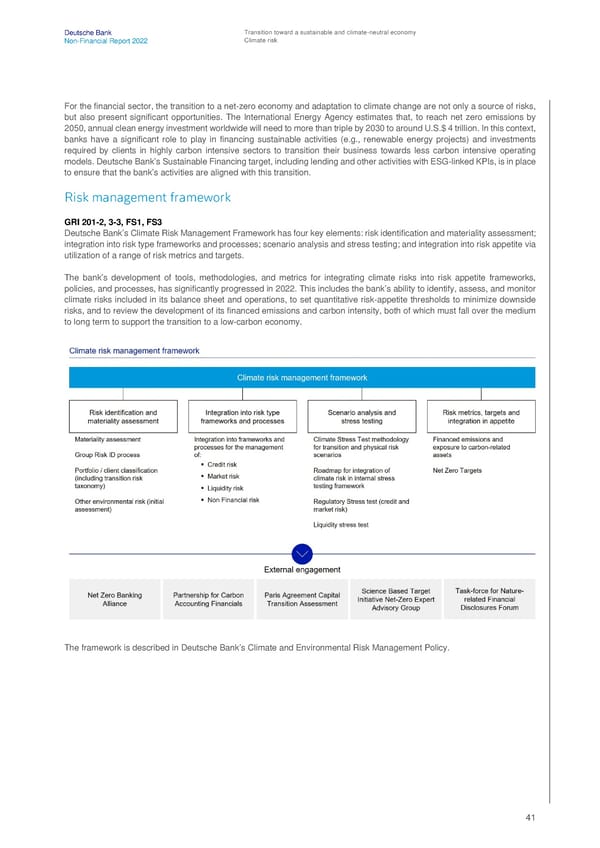Deutsche Bank Transition toward a sustainable and climate-neutral economy Non-Financial Report 2022 Climate risk For the financial sector, the transition to a net-zero economy and adaptation to climate change are not only a source of risks, but also present significant opportunities. The International Energy Agency estimates that, to reach net zero emissions by 2050, annual clean energy investment worldwide will need to more than triple by 2030 to around U.S.$ 4 trillion. In this context, banks have a significant role to play in financing sustainable activities (e.g., renewable energy projects) and investments required by clients in highly carbon intensive sectors to transition their business towards less carbon intensive operating models. Deutsche Bank’s Sustainable Financing target, including lending and other activities with ESG-linked KPIs, is in place to ensure that the bank’s activities are aligned with this transition. Risk management framework GRI 201-2, 3-3, FS1, FS3 Deutsche Bank’s Climate Risk Management Framework has four key elements: risk identification and materiality assessment; integration into risk type frameworks and processes; scenario analysis and stress testing; and integration into risk appetite via utilization of a range of risk metrics and targets. The bank’s development of tools, methodologies, and metrics for integrating climate risks into risk appetite frameworks, policies, and processes, has significantly progressed in 2022. This includes the bank’s ability to identify, assess, and monitor climate risks included in its balance sheet and operations, to set quantitative risk-appetite thresholds to minimize downside risks, and to review the development of its financed emissions and carbon intensity, both of which must fall over the medium to long term to support the transition to a low-carbon economy. The framework is described in Deutsche Bank’s Climate and Environmental Risk Management Policy. 41
 Deutsche Bank Non Financial Report Page 41 Page 43
Deutsche Bank Non Financial Report Page 41 Page 43